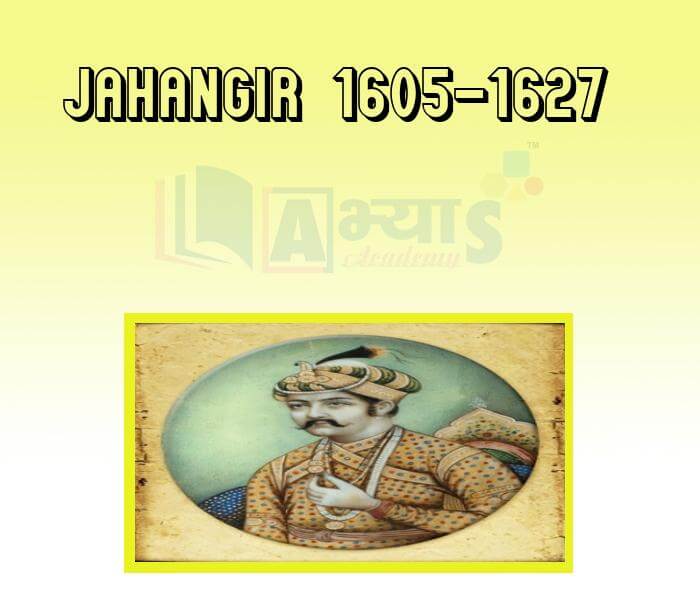Jahangir 1605-1627









Jahangir 1605-1627
Jahangir 1605-1627: Prince Salim, the Eldest son of Akbar, ascended the throne of Delhi as the fourth Mughal ruler amidst rebellion and potting by his own son Khusrau. He assumed the name of Jahangir. Military campaigns started by Akbar continued. The Sisodiya ruler of Mewar, Amar Singh, accepted Mughal service. Less successful campaigns against the Sikhs, the Ahoms and Ahmadnagar followed. Prince Khurram, the future emperor Shah Jahan, rebelled in the last years of his reign. The efforts of nor Jahan, Jahangir’s wife, to marginalize him were unsuccessful.
1 NurJahan: In 1611 CE, Jahangir married Mihrunnisa, the widow of Sher Afgan Jagirdar of Bengal. He made her his chief queen with the title of Nur Jahan (‘light of the world’).She acquired tremendous power and influence over the king,exerted her authority in all matters of administration, appointed her relatives and favorites to high positions and even had royal firmans (orders) and coins issued in her name.
2 Foreign influences and interactions: During the reign of Jahangir , a number of Europeans, like the Portuguese , the British and the Dutch, had begun to make their presence felt in India and other countries bordering the Indian Ocean.
As their economic interests began to clash, the Portuguese started attacking Mughal ships. To retaliate and put a check on them, Jahangir began to support their rivals, the British and the Dutch. In 1608 CE, Captain William Hawkins arrived at Surat with a letter from King James I of Great Britain to the emperor requesting permission to trade. Hawkins, who could talk with Jahangir in Turki, earned his goodwill and stayed at his court for three years as a mansabdar. In 1614 CE, Sir Thomas Roe was sent by James I as the British ambassador to the court of Jahangir.He stayed on till 1618 CE. Though he did not succeed in getting a formal treaty signed,he received liberal trade concessions for the British. They were also allowed to set up a factory at Surat.
3 The issue of coins: Jahangir issued many silver and gold coins, some bearing images only of him, and many with images of his wife Nur Jahan on the other side.
4 Jahangir continued his father’s traditions. A war with the Rajput principality of Mewar was ended in 1614 on generous terms. Campaigns against Ahmadnagar, initiated under Akbar’s rule, were continued fitfully, with Mughal arms and diplomacy often thwarted by the able Habshi (slave), Malik Ê¿AmbÄr. In 1617 and 1621, however, Prince Khurram (later Shah Jhan) concluded apparently victorious peace treaties. JahÄngÄ«r, like his father, was not a strict Sunni Muslim; he allowed, for example, the Jesuits to dispute publicly with Muslim ulama (theologians) and to make converts.
5 JahÄngÄ«r, a heavy drinker and opium eater—until excess taught him comparative moderation—encouraged Persian culture in Mughal India. He possessed a sensitivity to nature, an acute perception of human character, and an artistic sensibility, which expressed itself in an unmatched patronage of painting. Mughal painting reached a high level of elegance and richness during his reign.
Prince Salim was nickname of __________________ | |||
| Right Option : A | |||
| View Explanation | |||
Students / Parents Reviews [10]
Abhyas Methodology is very good. It is based on according to student and each child manages accordingly to its properly. Methodology has improved the abilities of students to shine them in future.

Manish Kumar
10thBeing a parent, I saw my daughter improvement in her studies by seeing a good result in all day to day compititive exam TMO, NSO, IEO etc and as well as studies. I have got a fruitful result from my daughter.

Prisha Gupta
8thOne of the best institutes to develope a child interest in studies.Provides SST and English knowledge also unlike other institutes. Teachers are co operative and friendly online tests andPPT develope practical knowledge also.

Aman Kumar Shrivastava
10thMy experience with Abhyas academy is very good. I did not think that my every subject coming here will be so strong. The main thing is that the online tests had made me learn here more things.

Hiya Gupta
8thA marvelous experience with Abhyas. I am glad to share that my ward has achieved more than enough at the Ambala ABHYAS centre. Years have passed on and more and more he has gained. May the centre flourish and develop day by day by the grace of God.

Archit Segal
7thMy experience with Abhyas is very good. I have learnt many things here like vedic maths and reasoning also. Teachers here first take our doubts and then there are assignments to verify our weak points.

Shivam Rana
7thIt has a great methodology. Students here can get analysis to their test quickly.We can learn easily through PPTs and the testing methods are good. We know that where we have to practice

Barkha Arora
10thIt was a good experience with Abhyas Academy. I even faced problems in starting but slowly and steadily overcomed. Especially reasoning classes helped me a lot.

Cheshta
10thIt was good as the experience because as we had come here we had been improved in a such envirnment created here.Extra is taught which is beneficial for future.

Eshan Arora
8thAbhyas is a complete education Institute. Here extreme care is taken by teacher with the help of regular exam. Extra classes also conducted by the institute, if the student is weak.
